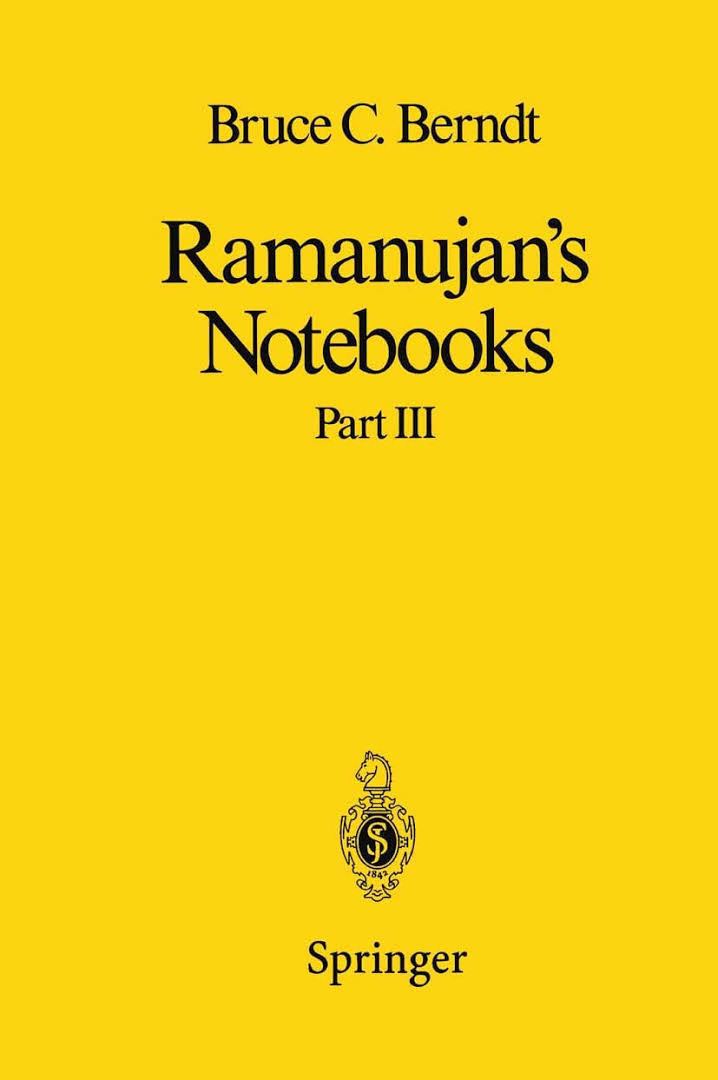Originally published 1985 | ||
 | ||
Similar Srinivasa Ramanujan books, Number theory books | ||
Bruce berndt on ramanujan s lost notebook iit madras 24th may 2011
Ramanujan's lost notebook is the manuscript in which the Indian mathematician Srinivasa Ramanujan recorded the mathematical discoveries of the last year (1919–1920) of his life. Its whereabouts were unknown to all but a few mathematicians until it was rediscovered by George Andrews in 1976, in a box of effects of G. N. Watson stored at the Wren Library at Trinity College, Cambridge. The "notebook" is not a book, but consists of loose and unordered sheets of paper — "more than one hundred pages written on 138 sides in Ramanujan's distinctive handwriting. The sheets contained over six hundred mathematical formulas listed consecutively without proofs."
Contents
George Andrews and Bruce C. Berndt (2005, 2009, 2012, 2013) have published several books in which they give proofs for Ramanujan's formulas included in the notebook. Berndt says of the notebooks' discovery: "The discovery of this 'Lost Notebook' caused roughly as much stir in the mathematical world as the discovery of Beethoven’s tenth symphony would cause in the musical world." (Peterson 2006)
History
After Ramanujan died on April 26, 1920, at the age of 32, his wife gave his notebooks to the University of Madras. On August 30, 1923, the registrar Francis Drewsbury sent much of this material to G. H. Hardy, probably including the lost notebook.
... Almost surely, this manuscript, or at least most of it, was written during the last year of Ramanujan's life, after his return to India from England. ... The manuscript contains no introduction or covering letter. In fact, there are hardly any words in the manuscript. There are a few marks evidently made by a cataloguer, and there are a few remarks in the handwriting of G. H. Hardy. Undoubtedly, the most famous objects examined in the lost notebook are the mock theta functions ...
Some time between 1934 and 1947 Hardy probably passed the notebook on to G. N. Watson, who with B. M. Wilson started on the project of editing Ramanujan's notebooks. However, Wilson died in 1935 and Watson seems to have lost interest in the project in the late 1930s. After Watson's death in 1965, J. M. Whittaker examined Watson's papers (which were a complete mess, due to be incinerated in a few days) and found Ramanujan's notebook, which he and R. A. Rankin sent to Trinity College Wren library on December 26, 1968. George Andrews (1986, section 1.5), following a suggestion by Lucy Slater, found the lost notebook in the spring of 1976 while on a visit to Trinity College. It was published on December 22, 1987, by Narosa publishing house.
Contents
Rankin (1989) described the lost notebook in detail. The majority of the formulas are about q-series and mock theta functions, about a third are about modular equations and singular moduli, and the remaining formulas are mainly about integrals, Dirichlet series, congruences, and asymptotics.
